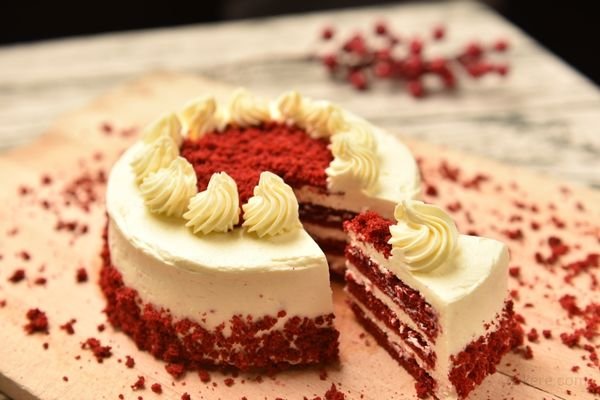When it comes to iconic desserts from the American South, few can rival the timeless appeal of Lane Cake. This rich, multi-layered confection has been a beloved treat for generations, enjoyed at everything from family gatherings to holiday feasts.
But what is the history of Lane Cake, and how did it become such a cherished part of Southern cuisine? In this article, we’ll explore the origins and cultural significance of this classic dessert, as well as some tips for making your own.

- What is Lane Cake?
- The Origins of Lane Cake
- The Ingredients of Lane Cake
- How to Make Lane Cake
- Serving and Enjoying Lane Cake
- Frequently Asked Questions
- Conclusion
What is Lane Cake?
Lane Cake is a classic Southern dessert that consists of multiple layers of yellow cake, each separated by a sweet, fruity filling made with raisins, nuts, and sometimes candied cherries. The entire cake is then coated in a fluffy, marshmallow-like frosting and sprinkled with coconut. The result is a decadent, multi-textured dessert that’s perfect for special occasions or as a comforting indulgence.
The Origins of Lane Cake
Lane Cake is named after its creator, Emma Rylander Lane, a homemaker from Clayton, Alabama. In 1898, Lane submitted a recipe for “Prize Cake” to the Atlanta Constitution newspaper’s recipe contest. Her recipe, which featured a unique combination of ingredients such as raisins, coconut, and brandy, won first place and was later published in Lane’s own cookbook, “Some Good Things to Eat” (1901).
Over time, the recipe became known as Lane Cake and gained popularity throughout the South. Today, Lane Cake is considered a quintessential Southern dessert and is often associated with holidays such as Christmas and Easter.
The Ingredients of Lane Cake
The traditional Lane Cake recipe calls for a variety of ingredients, including:
- Flour
- Sugar
- Butter
- Eggs
- Baking powder
- Salt
- Milk
- Vanilla extract
- Raisins
- Pecans
- Candied cherries (optional)
- Brandy or bourbon
- Coconut
Each layer of the cake is made separately, with the fruit filling spread generously between each layer. The frosting is typically made with egg whites, sugar, and cream of tartar, and is beaten until fluffy and light. The coconut is then sprinkled over the entire cake.
How to Make Lane Cake
While Lane Cake may seem intimidating at first, it’s actually fairly simple to make if you follow the recipe carefully. Here are the basic steps:
- Preheat your oven to 350 degrees Fahrenheit.
- Grease and flour three 9-inch round cake pans.
- In a large mixing bowl, cream together the butter and sugar until light and fluffy.
- Add the eggs one at a time, beating well after each addition.
- In a separate bowl, sift together the flour, baking powder, and salt.
- Gradually add the dry ingredients to the butter mixture, alternating with the milk.
- Stir in the vanilla extract.
- Divide the batter evenly between the three pans and bake for 25-30 minutes, or until a toothpick inserted in the center comes out clean.
- Let the cakes cool completely.
- In a saucepan, combine the raisins, nuts, cherries (if using), and brandy or bourbon. Cook over medium heat until the liquid is absorbed and the mixture is thick
Frequently Asked Questions
Yes, you can substitute apple juice or grape juice for the brandy or bourbon in the fruit filling. The cake will still have a rich, fruity flavor without the alcohol.
Lane Cake can be stored in the refrigerator for up to a week. To keep the frosting from getting too firm, cover the cake loosely with plastic wrap.
Yes, Lane Cake can be frozen for up to 3 months. Wrap the cake tightly in plastic wrap and then aluminum foil before freezing. Thaw in the refrigerator overnight before serving.
Conclusion
Lane Cake is a beloved dessert from the American South that has been enjoyed for over a century. Its unique combination of flavors and textures has made it a favorite at family gatherings, holidays, and special occasions. Whether you’re a seasoned baker or just starting out, Lane Cake is a dessert that’s well worth the effort. With its rich history and cultural significance, it’s sure to become a staple in your recipe collection.
